Heart, blood vessels and cholesterol

Learn about metabolic syndrome and its complications
Metabolic syndrome brings together several health problems. Together, they lead to complications that threaten a person's health and life.

What is hemangioma and why does it arise? Its symptoms and course
A hemangioma is a benign tumor formed from blood vessels. In childhood, there are congenital hemangiomas and infantile hemangiomas. Congenital hemangiomas are visible immediately after birth, infantile hemangiomas appear later, most often during the first year of life. In adulthood, hemangiomas are most commonly found on the chest, neck, face, and also on internal organs. According to the type of blood vessel from which they arise, they are divided into capillary and cavernous hemangiomas. When multiple hemangiomas occur, the disease is called hemangiomatosis.

Pain under the left rib: is it a symptom of some disease?
Pain occurring under the left rib can occur with muscle strains, after injuries, but can also indicate a serious problem.

FACT: The 6 most common causes of chest pain. 8x for immediate help
Chest pain usually catches us off guard. It's the location and the fear that there's something wrong with the heart.
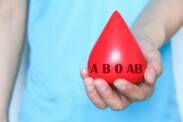
What secrets do our blood types hide? AB is the rarest, what else should we know?
Blood group = a characteristic of red blood cells. What makes the blood group system interesting and what should we know about it? As a bonus, here's a brief look into its history.
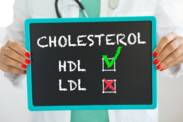
How to lower cholesterol? We know 20 foods to help get it under control
Cholesterol is an essential building block of all our cells. It is an animal fatty substance that has a similar chemical structure to steroids.
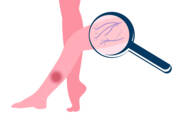
Tiber ulcer: what is it, how does it manifest itself and what does it look like?
Many of us are familiar with a tibial ulcer, at least from hearsay. Let's take a closer look at the causes, symptoms and treatment.

Slow heart rate - what does a low heart rate below 60 (50) mean? Can it be dangerous?
A slow heartbeat is referred to as bradycardia. It is divided into physiological (when its cause is not a disease) and pathological (which is already a symptom of a disease).
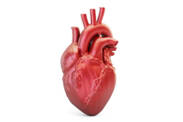
Cardiomyopathy: What is it, how does it manifest? Causes in childhood and adulthood
Cardiomyopathy refers to a group of diseases that affect the heart muscle, the myocardium. We know several forms, they have different symptoms and also different treatments.

Angina pectoris: What it is and what are the symptoms of a stable or unstable form of chest pain?
Angina pectoris, or angina pectoris, is one form of ischemic heart disease. It arises as a result of a mismatch between the need and the supply of blood, and therefore also oxygen and nutrients, to the heart. It typically occurs with increased physical or mental stress. Attacks of angina pectoris recur and are manifested by pressure or animal pain in the chest.

Lymphedema: What is it and how does it manifest? + Treatment
Lymphedema is a long-term disease that worsens over time or progresses. It is divided into primary and secondary. In the latter case, it is necessary to look for the cause of another disease. It also occurs as a result of impaired function of the lymphatic system. It causes the accumulation of fluid in the tissues and subsequent swelling.
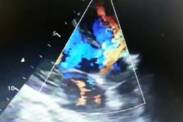
Atrial and ventricular septal defect
A defect in the atrial and ventricular septum is a heart defect and a disease of the atrial or ventricular septum that causes communication between the right and left hearts so that oxygenated and deoxygenated blood mix. It is a congenital heart defect, whereby mixed oxygenated and deoxygenated blood is distributed throughout the body, which can cause major problems. Very often such defects appear in childhood, but it also depends on the size of the defect, sometimes they appear in adulthood.
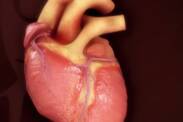
Fallot tetralogy
Fallot tetralogy is congenital heart disease and the most common cyanotic heart defect. It is a disease of the heart and large vessels, and it occurs mainly in childhood, sometimes in adulthood, but then the patient is less burdened by the disease and may not manifest itself in any particular way. The disease is often accompanied by other cardiac and vascular defects, such as coronary artery defects or an opening in the septum between the atria directly in the heart.

Aortic coarctation: causes and symptoms of aortic narrowing?
Coarctation of the aorta is a congenital heart defect characterized by narrowing of a major heart vessel. It accounts for nearly one-tenth of congenital heart defects. How does this developmental cardiovascular disease arise?

Leukemia: Why does it occur and what are its symptoms? + Diagnostics
What is leukaemia, why does it occur and how does it manifest itself? What is used in diagnosis and what is the treatment?
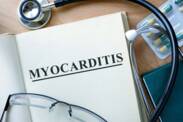
Myocarditis: inflammation of the heart muscle. Myocardial infarction, a type of heart disease
Myocarditis is an inflammatory process of the heart muscle. Inflammation of the heart muscle can cause a decrease in heart function. What are the causes, first symptoms and current treatment options for myocarditis?

Pericarditis: inflammation of the heart lining. What are its causes and symptoms?
Pericarditis refers to an inflammatory process of the outer lining of the heart (pericardium). It has different etiologies. What is the cause of pericarditis, the first symptoms and treatment options?

Sleep apnea syndrome: what is it, what causes and symptoms? Diagnosis
Sleep apnoea is a disorder classified as a sleep-wake disorder, a sleep-disordered breathing disorder. It is a condition in which breathing repeatedly stops during sleep and starts again after a brief awakening.
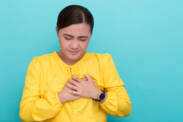
Chest pain: Symptoms, Causes, Treatment
This symptom can have many causes like minor diseases of the muscles and soft structures between the ribs. Also, pain sometimes radiates from the spine and the abdominal organs. However, sometimes the cause is more serious: cardiovascular disease, lung disease, inflammation, anemia. This is a life-threatening condition.

Rapid heart rate: what are the causes of a high pulse above 90 to 100? (tachycardia)
We don't normally feel our heartbeat. When the heart rate increases, the heart rate increases. And in certain circumstances, it's noticeable. It increases with increased physical or mental exertion. But often, the increase is due to disease.









